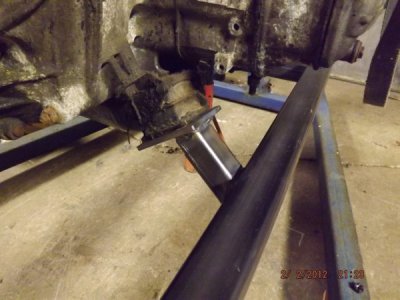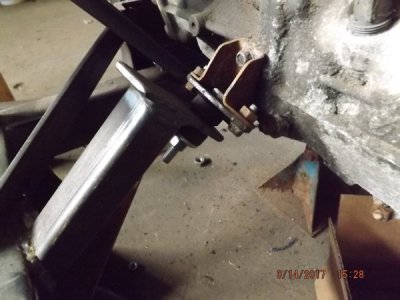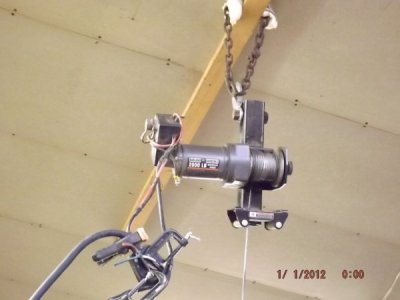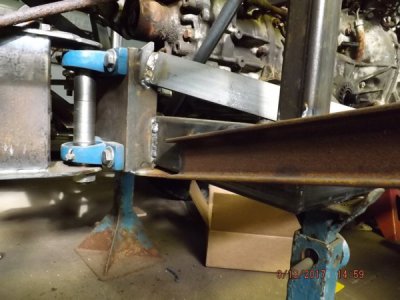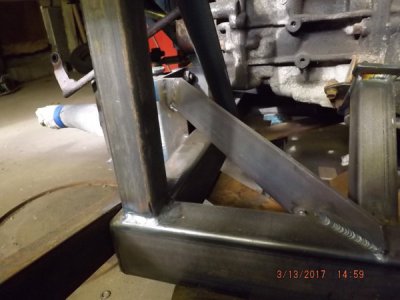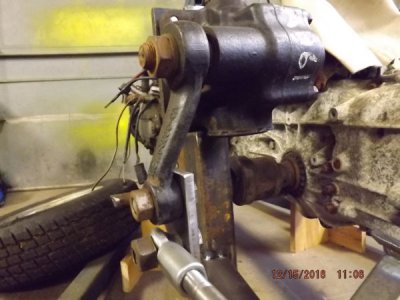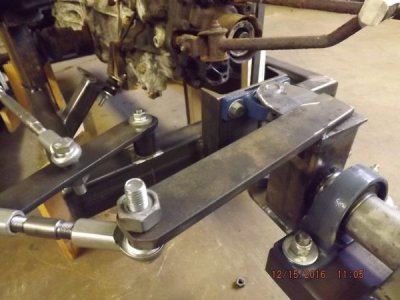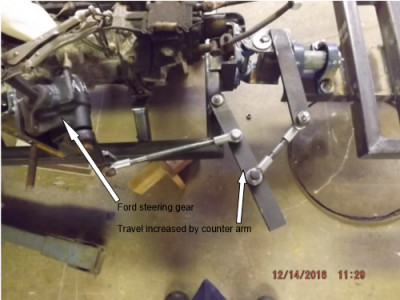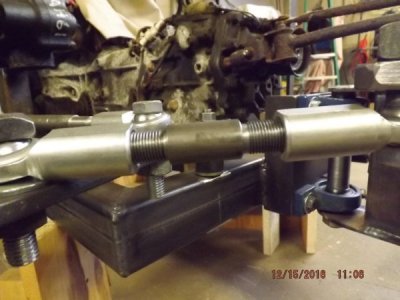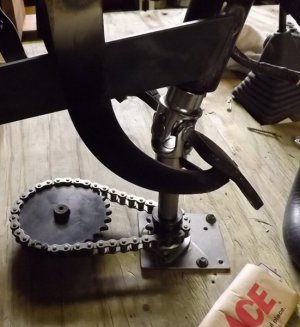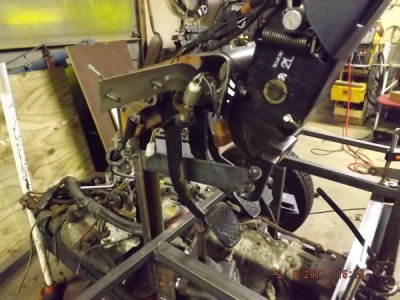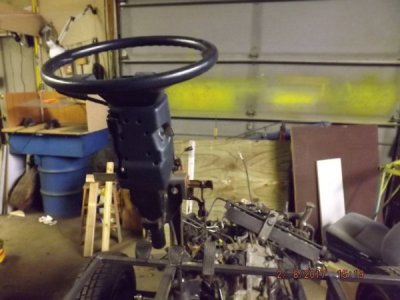- Joined
- Apr 22, 2016
- Messages
- 965
REAR FRAME SECTION AND PIVOTS
Before starting to build the rear frame, some thought went in to the steering pivot and how it would affect the length of the drive shaft. I had to determine the exact apex of the CV joint when at angle and make sure the apex and steering pivot were both at the same point vertically. If they were different the slip yoke would move too much on the trany output spline and could either bottom out in the trany or come off the spline.
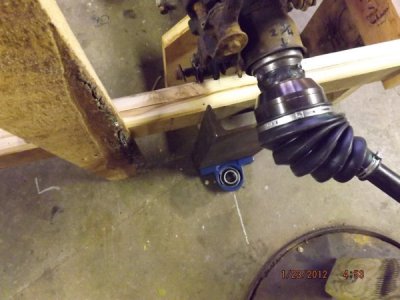
I wanted all the wheels to stay on the ground no matter how uneven the ground was. So in addition to the steering pivot there is a (for lack of a better or proper word) twist pivot. On a log skidder or loader this is done by pivoting one of the axles. Here the whole rear frame is pivoted. In an aircraft this would be called roll.
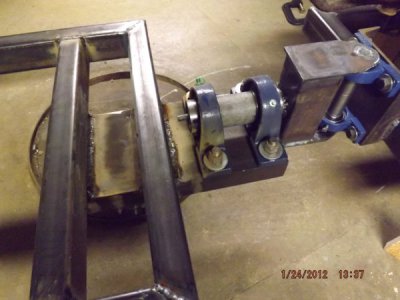
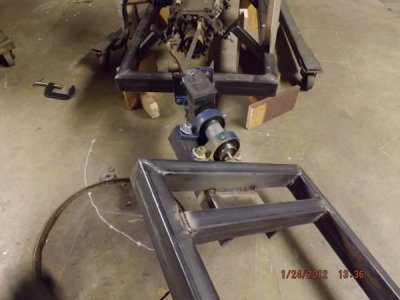
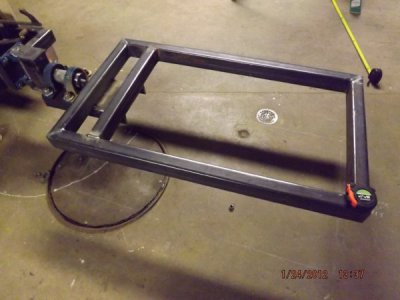
I was planning to build the pivots from scratch and had purchased material to do that but found that at the price these pillow block bearings can be had on EBAY I'd be wasting my time building them.
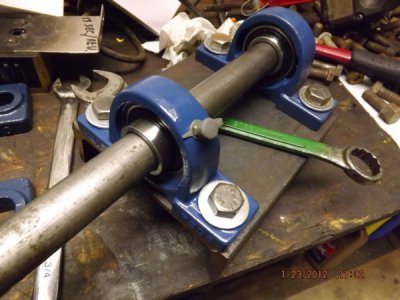
SPINDLES AND DRIVE AXELS
I'm trying to use as much stuff from the car as I can to keep the cost down but one thing that was unusable were the spindles. There's just too many lugs and weird shapes to be able to figure a way to fasten them in place. So I decided to turn new ones on the lathe. I had 2 pieces of heavy wall mechanical tubing, I bought one more and one I turned from a piece of solid stock.
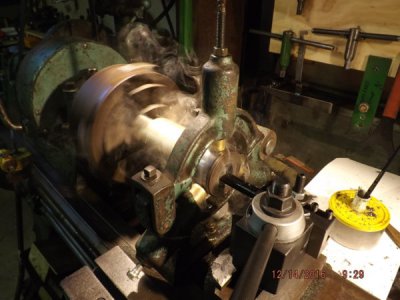
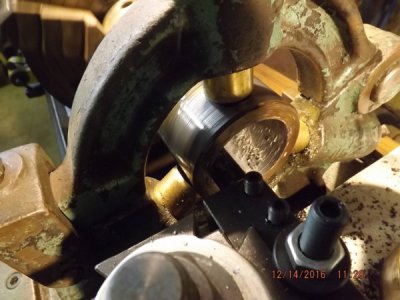
All that boring boring (pun intended) gave me an excuse to make a large boring bar that would gladly take a heavy cut and speed up the operation . See thread on this forum large boring bar
I purchased new sealed ball bearings. The back of the spindle has a welded on shoulder and the bearings are held in by an insert with 3 set screws. Front and rear are built the same but the rear are slightly smaller.
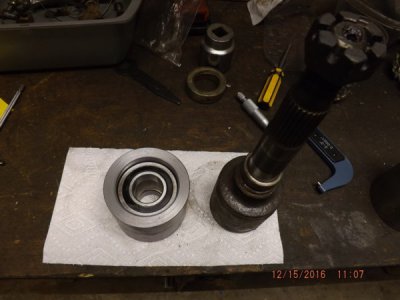
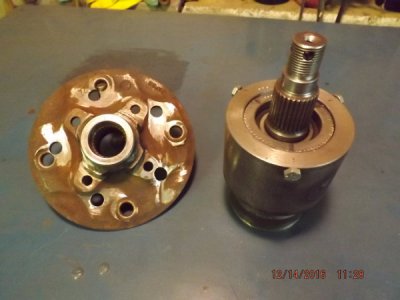
The original wheels and hubs had a 4 hole bolt pattern but the wheels that I wanted to use (from a previous truck I owned with near new grippy tread tires) had 5 hole bolt pattern. So I rebored the hubs on the mill using the DRO bolt circle function. 1/2" fine thread grade 8 bolts were used for studs
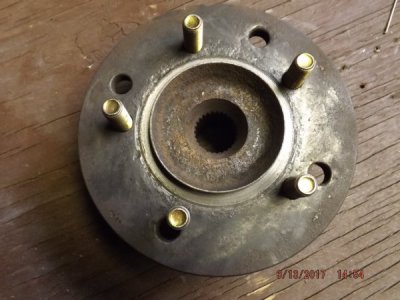
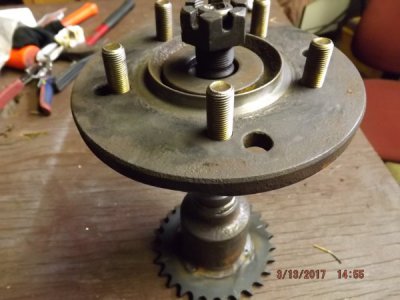
and they were welded on the back side of hubs.
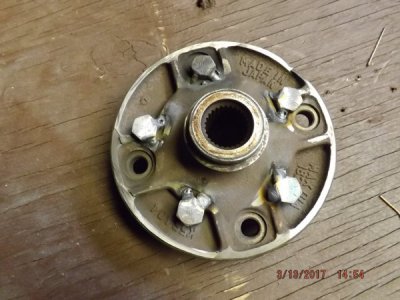
There will be a sprocket and chain reduction at each wheel. I have no need to go fast but must be able to go slow for the snow blower. 11 and 28 tooth sprockets and #50 chain.
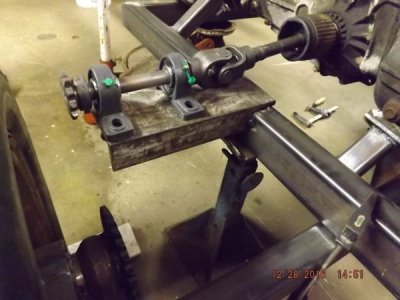
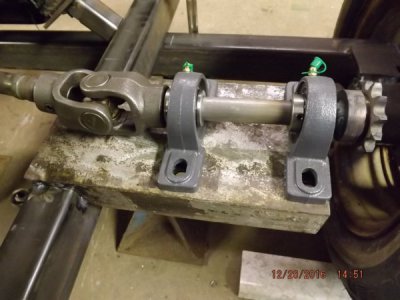
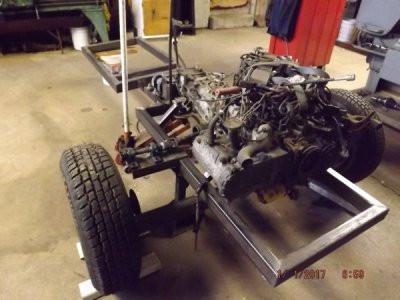
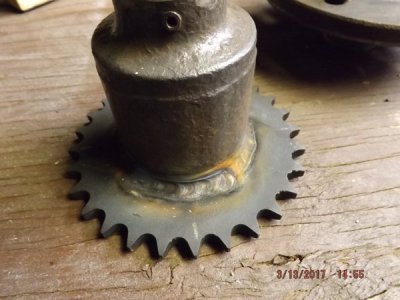
These pictures were taken before bracing was added to support members and the plan is for even more.
Thanks for looking
Aaron
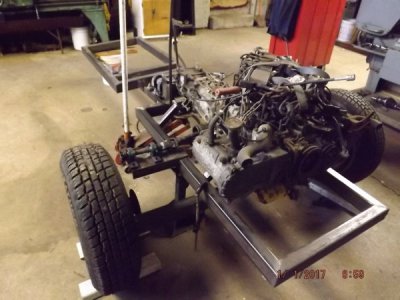
Before starting to build the rear frame, some thought went in to the steering pivot and how it would affect the length of the drive shaft. I had to determine the exact apex of the CV joint when at angle and make sure the apex and steering pivot were both at the same point vertically. If they were different the slip yoke would move too much on the trany output spline and could either bottom out in the trany or come off the spline.

I wanted all the wheels to stay on the ground no matter how uneven the ground was. So in addition to the steering pivot there is a (for lack of a better or proper word) twist pivot. On a log skidder or loader this is done by pivoting one of the axles. Here the whole rear frame is pivoted. In an aircraft this would be called roll.



I was planning to build the pivots from scratch and had purchased material to do that but found that at the price these pillow block bearings can be had on EBAY I'd be wasting my time building them.

SPINDLES AND DRIVE AXELS
I'm trying to use as much stuff from the car as I can to keep the cost down but one thing that was unusable were the spindles. There's just too many lugs and weird shapes to be able to figure a way to fasten them in place. So I decided to turn new ones on the lathe. I had 2 pieces of heavy wall mechanical tubing, I bought one more and one I turned from a piece of solid stock.


All that boring boring (pun intended) gave me an excuse to make a large boring bar that would gladly take a heavy cut and speed up the operation . See thread on this forum large boring bar
I purchased new sealed ball bearings. The back of the spindle has a welded on shoulder and the bearings are held in by an insert with 3 set screws. Front and rear are built the same but the rear are slightly smaller.


The original wheels and hubs had a 4 hole bolt pattern but the wheels that I wanted to use (from a previous truck I owned with near new grippy tread tires) had 5 hole bolt pattern. So I rebored the hubs on the mill using the DRO bolt circle function. 1/2" fine thread grade 8 bolts were used for studs


and they were welded on the back side of hubs.

There will be a sprocket and chain reduction at each wheel. I have no need to go fast but must be able to go slow for the snow blower. 11 and 28 tooth sprockets and #50 chain.




These pictures were taken before bracing was added to support members and the plan is for even more.
Thanks for looking
Aaron



